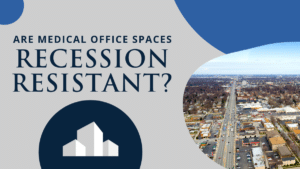The Top 10 Cities With the Most Affordable Real Estate and Prospects for Property Appreciation
It is no secret that housing is prohibitively expensive in California, but perhaps less known is the disease of exorbitant rents and mortgages has spread to nearly the entire West Coast—and is gaining footholds in some other markets, such Austin, Miami and Salt Lake City. And housing costs in the greater New York City region have long been burdensome.
In 2021, despite pandemic and an uncertain economy, house prices and rents across the US rose by about one-fifth. What had been a drain on middle-class budgets—inexorable monthly housing expenses—became unbearable for many in the 2020s, and populations have started migrating away to less-costly locations.
No wonder: A median-priced house in Miami proper sold for $469,562 in January 2022, up 21.2% from a year earlier, reported Zillow. The median-price home was $934,305, up 16.1% on year in Los Angeles—-and remember, that’s a median for the whole city, including some neighborhoods most middle-class families might avoid. Seattle posted in at $915,340.
Austin logged at $639,839, up 41.2% in just one year. New York City posted at $741,622, up modestly for the year.
While some have blamed low interest rates for the house-price surge of 2021, at bottom there was an even more intractable problem, and that is limited supply due to building restrictions and property zoning. In the vast majority of U.S. cities, builders must seek permission before erecting housing, and large swaths of land are zoned single-family detached, or have other restrictions, such as on the density or height of new structures.
It is a rare neighborhood indeed that wants high-rise condo towers to be built in the midst of their single-family detached enclave.
Naturally, both homebuyers and investors might wonder if there are regions or cities where housing is affordable, and thus likely to attract population and enjoy property appreciation in the years ahead.
You can find many lists online detailing the most affordable places to invest in real estate.
The most rapid increase in relative home values happened recently.
Other experts will reveal that the recent pandemic-related eviction moratoriums may have had a lot to do with real estate prices becoming a bit more affordable in certain regions, which is no lie.
But those lists won’t tell you what you need to know about retaining value appreciation on your investment.
So here is a list of the 10 cities with some of the most-affordable housing, and promising property markets, in the nation.
If you need guidance on retail, industrial, or medical office real estate investment, contact Alliance CGC now.
Related: SELF DELUSION DOESN’T PAY
Subscribe to our commercial real estate newsletter.
1. Detroit
Median House price: $64,368. Appreciation in recent 12-month period: 31.1%
A buyer can do a double-take at Detroit housing prices, which look like sticker prices at some West Coast auto lots. But double-take twice and the property values could be higher; in a recent 12-month period median Detroit house price were up 31.1%, reports Zillow.
Of course, every one knows the Detroit story, the sad tale of the lengthy decline of the Motown city that was the richest in the nation on a per capita basis in 1960—and seemingly has seen nothing but hard times ever since.
The population of Detroit has shrunk dramatically from 1950 to 2021, losing two-thirds of it residents to a present-day tally of about 640,000. However, population of the greater Detroit metropolitan area has been more or less steady in recent decades at 3.5 million. Like most cities, Detroit is made up of neighborhoods, with different prospects pertaining to each.
Despite tenacious urban ills, there are some signals the region is on the mend. For example, industrial rents have risen 31% from 2016 to 2021 in greater Detroit, and the warehouse vacancy rate is a relatively low 2.3%. At the end of 2021, more than 8 million square feet of new warehouse construction was underway, on a metro area base of 529.8 million square feet. Some serious investors must believe the economy has an upside.
Detroit still has considerable amenities, such as major-league sports teams, world-class museums, and excellent restaurants.
While the glory years are likely gone for good, Detroit is seeing better days, and rising property values. The city has an intact infrastructure, a renewed downtown, tremendous architecture and a reviving warehouse market. A long rebound may be in the cards.
2. Harlingen, Texas
The median-price home is $151,479. Appreciation in a recent 12-month period: 20.7%
On the Mexican border, nearly at the very southern tip of Texas, is Harlingen. Unlike Detroit, the population of Harlingen has nearly doubled since 1970, although in recent years the city headcount have been steady. Harlingen is part of larger metro area with about 425,000 people.
While summers are oppressive in heat and humidity, the weather is considered pleasant otherwise in Harlingen, with beach recreation at South Padre Island a 45-minute drive away. Visiting Mexico is easy as well. Cuisine is largely American and Latin, with 90% of the metropolitan area identified as Hispanic.
The median household income in Harlingen is $34,868 a year, vs. the U.S. average is $53,482. Residents say cultural amenities may be limited, but living costs low, and neighborhoods friendly. Cities such as Harlingen appear poised for long-term growth.
3. Toledo, Ohio
The median-price home is $102,102. Appreciation in a recent 12-month period: 18.2%
The classic Rust Belt town, Toledo’s population peaked in the 1970, at 383,818, and in that year was up a thumping 20.7% from 1960, in the last of the boom times. But since 1970 the city has lost 100,000 residents.
The larger Toledo metro area a population of 650,000, and the number of residents in the region has stabilized in recent years. As an older and once-prosperous Northern city, Toledo has cultural amenities not found is some locations, such as a zoo, a renowned art museum, opera and symphony, a botanical garden, as well as the University of Toledo.
In some Toledo neighborhoods, such as Scott Park, single-family detached homes sell for $50,000 and people enjoy walking dogs.
Like other northern industrial towns, Toledo appears to have finally struck bottom in the 2020s population-wise, while cheap housing could support the introduction of new businesses. Toledo property owners may do well in coming years.
4. McAllen, Texas
Median House price: $168,514. Appreciation in recent 12-month period: 19.1%
Another town near the southern tip of Texas, McAllen is growing, and its population 145,482 has nearly doubled in the last 30 years. McAllen rests on the border with Mexico, but inland 70 miles from the Gulf of Mexico.
The city’s economy has prospered on rising trade with Mexico (McAllen has a federal free trade zone), on low-cost industrial facilities, and has a low crime rate. In recent years the city has become known as the best retail shopping area in the region—McAllen even has a Japanese-Peruvian restaurant serving denizens of the city’s art district.
If global trade with China is disrupted, there is no telling how high McAllen’s star could rise.
5. Memphis, Tenn
Median House price: $139,694. Appreciation in recent 12-month period: 21.2%
Memphis is growing, with a recent headcount of 633,104. The population of greater Memphis in 2022 is 1.16 million, up from an even 1.0 million in 2003. Memphis, like nearby cities Louisville and Nashville, has been enjoying growth in recent years as a low-cost refuge from Atlanta, Chicago and other higher cost regions, and on the popularity of the city’s music scenes.
As a port, highway and rail crossroads city, Memphis has benefitted from the internet-era shipping boom. In a market with 240.6 million square feet of warehouse space, builders have 11.7 million additional square feet under construction, a huge expansion, reported brokerage JLL.
Louisville is also known for surviving exquisitely ornate cast-iron facade warehouse and office buildings, and vast parks that ring the city, designed by the father of American landscape architecture, Frederick Law Olmsted.
Among other features, one-third of the world’s bourbon is made in Louisville as well as the wooden “Louisville Slugger” baseball bats. The Kentucky Derby, America’s premier thoroughbred horse race is held annually in the city.
Like so many US cities, Louisville was struck by de-industrialization through after the 1970s, which impoverished the city core. However, the city appears to be recovering, and prospects for house prices are certainly better than in many decades.
6. Decatur, Illinois
Median House price: $90,869. Appreciation in recent 12-month period: 13.9%
Like so many other northern cities, Decatur’s population peaked in decades past, and then has declined with de-industrialization. In 1980, the city had 93,900, compared with under 70,000 at most recent count. However, setting aside the COVID-19 pandemic disruption, employment in Decatur generally stabilized after 2010.
The city is the manufacturing and agricultural hub of central Illinois, with such icons as Caterpillar and Archer Daniels Midland as pillars of the local economy.
In common with other northern industrial hubs, Decatur has interesting surviving architecture, and the older central business district was added to the National Register of Historic Places in 1985. The downtown has been repositioned to service the nightlife and restaurant trade. The private Milliken University is nearby.
The post-1960 industrial decline has made Decatur into a low-cost city, but for that reason one likely to attract residents and businesses in the years ahead.
7. Kokomo, Indiana
Median House price: $140,613. Appreciation in recent 12-month period: 18.0%
Though the Kokomo economy is still tied to the auto industry, which was struck by the pandemic, nevertheless home prices rose nearly by one-fifth in a recent 12-month period. Total employment in Kokomo actually edged higher after 2010, a sign of another industrial city that has bottomed out.
Kokomo is the manufacturing and agricultural hub of north central Indiana, but unlike many other older industrial towns, Kokomo’s population did not shrink after the 1960s, but rather stabilized.
There is a University of Indiana in Kokomo, and like so many cities, an improving local cuisine scene. The larger city of Indianapolis is about a one-hour drive away.
As Kokomo never went into a steep decline like some of northern factory towns, housing is not quite as cheap as in a Toledo or Detroit, but there is plenty of lower-cost stock for those willing to hunt for it. Many corporations are finding employees scarce in high-cost regions, and low-cost cities like Kokoko may be the answer to that.
8. Texarkana, Texas
Median House price: $158,811. Appreciation in recent 12-month period: 13.2%
Unlike northern towns on this list, the population of Texarkana has grown since 1960s, before stabilizing around 36,000 in the last ten years. The larger Texarkana region has a population of near 150,000, and includes Texarkana’s namesake and twin city on the Arkansas side of the border.
Texas A&M has a college campus on Texarkana, and there are abundant fishing and hiking recreational opportunities outside of town.
Texarkana also boasts of the Perot Theatre, built in 1924, restored, and listed in the National Register of Historic Places.
A Goodyear Tire (formerly Cooper) plant employs 1,500 in the city, and trucking operations are another mainstay of the economy.
It is nearly a three-hour drive to nearest big city, Dallas, so Texarkana residents must largely make-do with small-town life. Residents also enjoy the fact that there is no income tax is Texas.
The State of Texas appears to be gaining business and population, and if Texarkana gets its share of that, then housing in the city could be a good investment.
9. Jackson, Tennessee
Median House price: $173,828. Appreciation in recent 12-month period: 24.6%
The population of Jackson, now about 67,000, has been steadily climbing, and not just in the postwar era but for the last 120 years. The greater Jackson metropolitan area has a population near 180,000. In recent years the number of employed in Jackson proper has been rising steadily.
Union University, a Christian school, is near Jackson, and the city also hosts the Jackson Symphony. It is a couple hours driving to either Nashville and Memphis, although Jackson itself is known as the home of rock-a-billy music.
Jackson is known as an agricultural hub and food-processing center, and for an industrial base that includes several Toyota factories.
Considered a family-friendly town, summers are hot and humid, but the rest of year can be regarded as pleasant in Jackson. There is single-family housing in Jackson for under $100,000, which may do well in the coming years.
10. Anniston, Alabama
Median House price: $114,115. Appreciation in recent 12-month period: 19.8%
The population of Anniston has been declining since 1960, down by about one-third in the last 60 years to a little under 21,000 residents presently. The larger Anniston-Oxord metropolitan region has about 115,000 residents, and has also been slowing losing population, which is one reason why housing is cheap in the area.
More positively, pre-pandemic, the number of people employed in greater Anniston was slowing increasing.
Anniston is about a one-hour west by automobile from the nearest big city, that being Birmingham. The Mountain Longleaf National Wildlife Refuge, and Talladega National Forest are nearby, while the Anniston Museum of Natural History is well-regarded.
Like other cities on this list, Anniston offers low-cost housing, and that may be enough to attract industry into the area.
Conclusion
It is important for any prospective investor to understand the breadth of financing available for commercial real estate deals, as the cost of capital is one of the biggest expenses sponsors will incur.
Given the range of options available to borrowers, they will want to carefully consider the deal’s specifics when pursuing alternative options. This includes the anticipated loan-to-value ratio (including how much equity the sponsor will be directly contributing), current occupancy or length of time prior to stabilization, anticipated cash flows, and more.
Deals considered to be “higher risk” for one reason or another may have fewer financing tools available.
Nevertheless, sponsors should never assume that a certain source of capital is off the table—they should pursue all options to be sure they are locking in the best rate and terms, which will ultimately trickle down to the benefit of each individual investor.
Start your future in retail, medical, and industrial commercial real estate investments with Alliance CGC.
Related: SELF DELUSION DOESN’T PAY
POSTED BY
Ben Reinberg
Founder & CEO | Alliance Group Companies

Ben Reinberg is Alliance Group Companies' founder and CEO.
Since 1995, Alliance Consolidated Group has acquired and invested in medical properties with net leases between $3 and $25 million across the United States. With decades of commercial real estate experience, we take pride in committing to meeting the goals of our Sellers, as we consistently and seamlessly adhere to successful closings.



